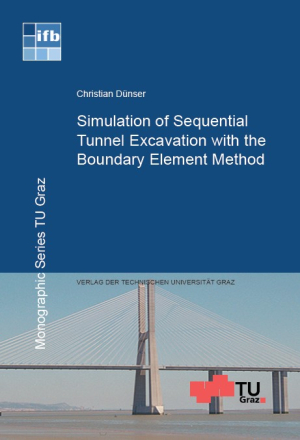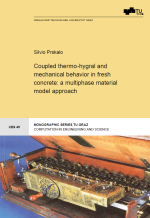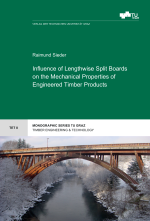The New Austrian Tunnelling Method is characterised by a complicated sequence of excavations and installation of support systems. A numerical modeling of such an excavation sequence is a three dimensional problem. A reduction to a two dimensional problem, as is often carried out in practice, is possible but the simplifications introduced may lead to erroneous results.
In this thesis the sequential excavation is simulated using the boundary element method (BEM) in 2-D and 3-D. The fundamentals of the boundary element method are presented, which form the basis of the multiple region BEM. In the multiple region BEM the surface of each volume of an excavation step is discretized with boundary elements, which form a region. As in the finite element method, stiffness matrices of all regions are generated with the BEM and assembled in a global set of equations. Particular attention is given to the problem of corners and edges, which arise in the multiple region BEM.
During this work a computer program has been developed which is able to simulate sequential excavation with the BEM. With this computer program various realistic tunnelling examples in 2-D and 3-D are calculated and compared with the results from finite element analysis
Issue: paperback
ISBN: 978-3-902465-65-8
Scope: 155 pages
Language: Englisch
Release date: December 2007
Series: Monographic Series TU Graz / Structural Analysis
Out of stock!
The New Austrian Tunnelling Method is characterised by a complicated sequence of excavations and installation of support systems. A numerical modeling of such an excavation sequence is a three dimensional problem. A reduction to a two dimensional problem, as is often carried out in practice, is possible but the simplifications introduced may lead to erroneous results.
In this thesis the sequential excavation is simulated using the boundary element method (BEM) in 2-D and 3-D. The fundamentals of the boundary element method are presented, which form the basis of the multiple region BEM. In the multiple region BEM the surface of each volume of an excavation step is discretized with boundary elements, which form a region. As in the finite element method, stiffness matrices of all regions are generated with the BEM and assembled in a global set of equations. Particular attention is given to the problem of corners and edges, which arise in the multiple region BEM.
During this work a computer program has been developed which is able to simulate sequential excavation with the BEM. With this computer program various realistic tunnelling examples in 2-D and 3-D are calculated and compared with the results from finite element analysis




